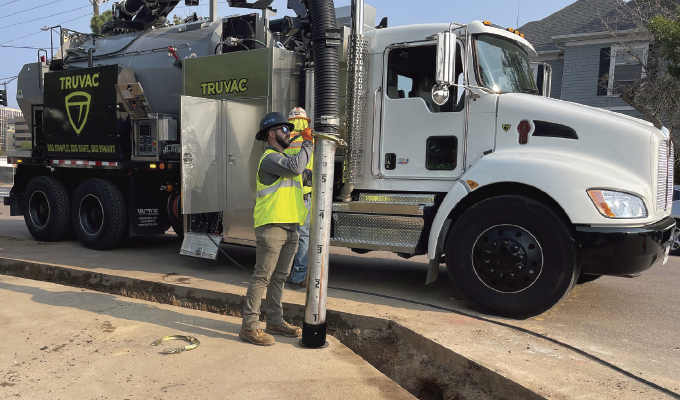Concerns should be the last thing blooming during spring construction and utility projects. As winter weather makes its way out, excess water and softening ground should not stand in the way of work and repairs.
Hydro excavation is a process of removing soil and debris in a variety of conditions. The process utilizes pressurized water and a powerful vacuum for precise digging without damage to underground utilities and natural elements.
Vacuum excavators are often the go-to solution for safely uncovering underground utilities without causing damage. They can also perform slot trenching, which is a solution for digging narrow trenches without disrupting the surrounding earth. Additional applications include cold weather excavation, lateral rehab of America’s oldest infrastructure, and other landscaping, plumbing, and municipal applications.
The team at TruVac, a leading manufacturer of hydro-excavators, reminds equipment users of some important springtime work tips.
- Form a plan. Soil type, along with debris and water content are always things to look out for before taking on a hydro excavation project. While heavy rain and flooding can cause sandy soil to become compacted, making it easier to remove debris, springtime conditions can be unpredictable. Make a plan for steps to take in various potential situations.
- Consider thawing grounds. Soft ground and flooding are common during spring jobs, however frozen conditions can be hidden below. As in winter weather, the hydrovac may still require heated water to get the job done.
- Know the debris capacity. As snow melts and rainfall increases, there may be more muddy or wet debris on a work site. Hydrovac trucks have a debris body capacity ranging from five to 15 cubic yards.
- Consider the vacuum source. There are two main options to choose from when considering the vacuum source for hydro excavation: a fan system or a positive displacement (PD) blower. For springtime projects, PD blowers can be beneficial due to their ability to pull heavy, wet material over long distances.
- Follow safety protocols. Hydroexcavation promotes worker safety by minimizing the need for manual labor. However, proper personal protective equipment such as hard hats, long sleeves, and gloves are necessary for operators regardless of site conditions and temperature.
- Practice proper maintenance. Debris can accumulate on hydrovac tanks and becomes difficult to remove. Dry, sandy soil tends to create the most buildup, so spring conditions can lend a hand in reducing concerns. However, it is important to store hydrovacs in a clean dry environment during wet seasons to prevent buildup on the tank.
about the author
Dustin Rhodes is TruVac’s product manager. TruVac is a premium brand of vacuum excavator trucks and trailers designed to satisfy the safe-digging requirements of the construction and underground utility industry. For more, visit www.truvac.com.


